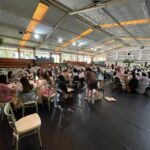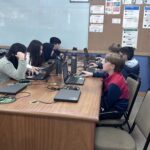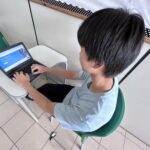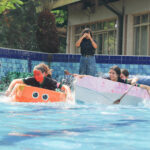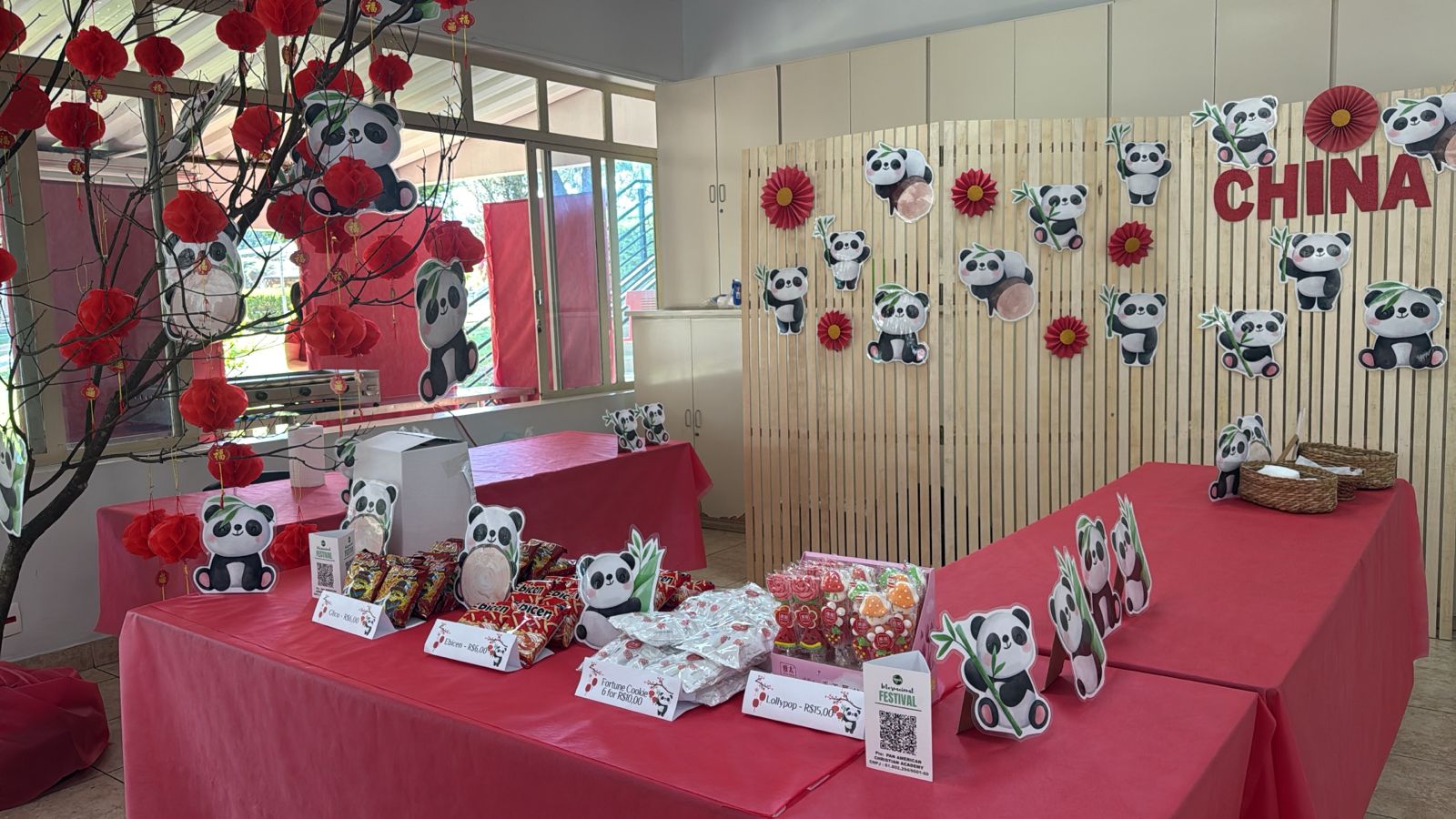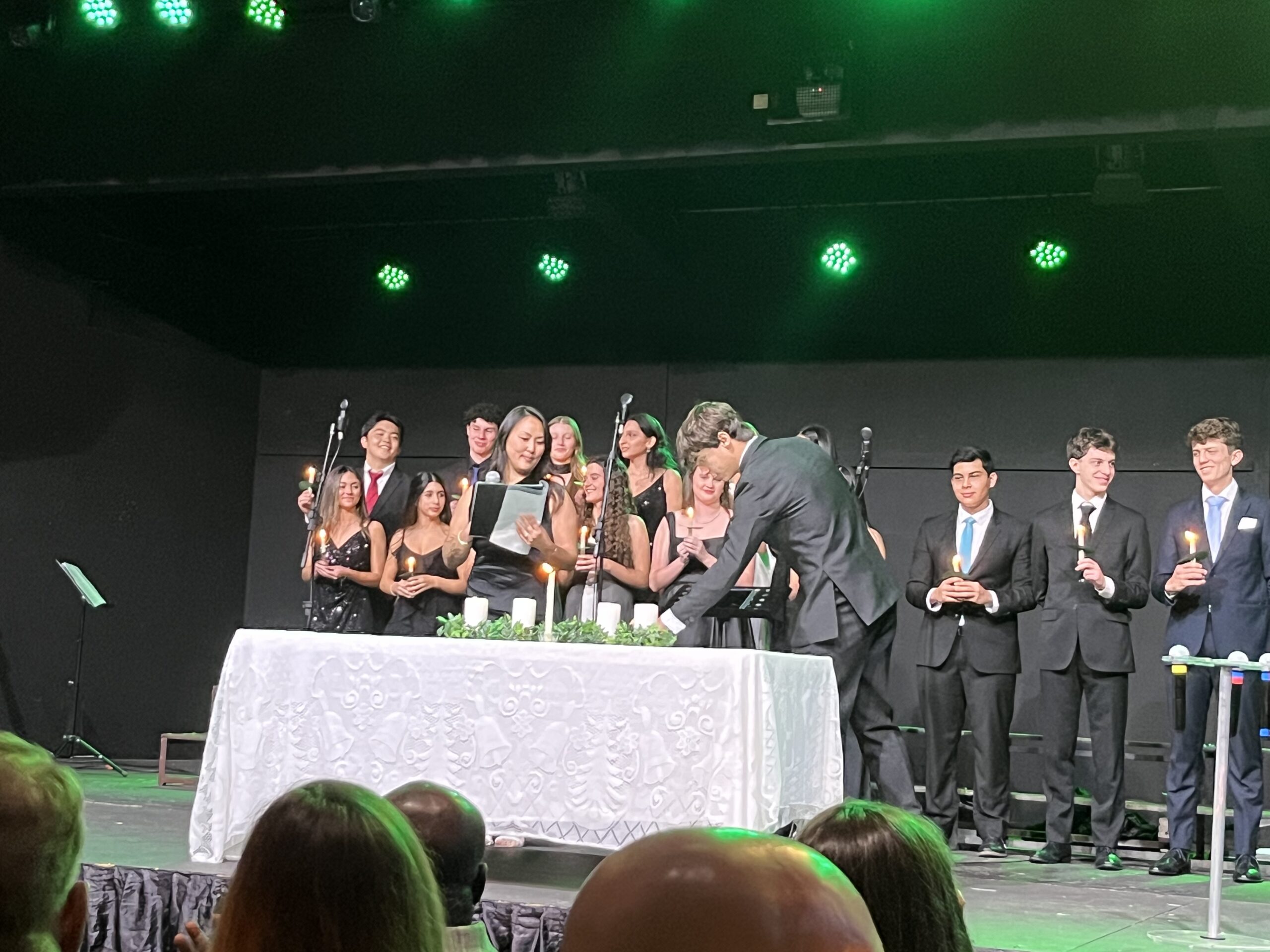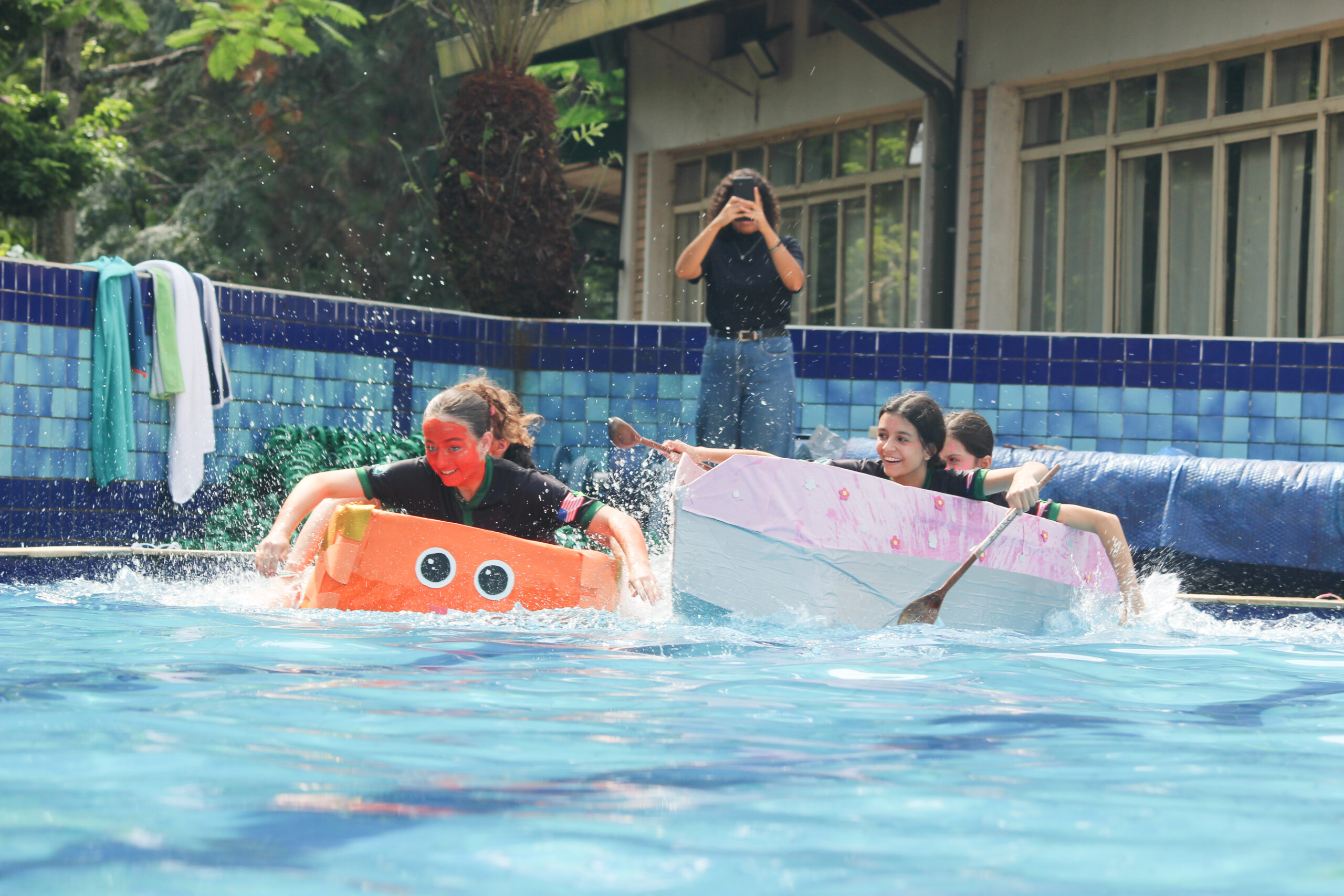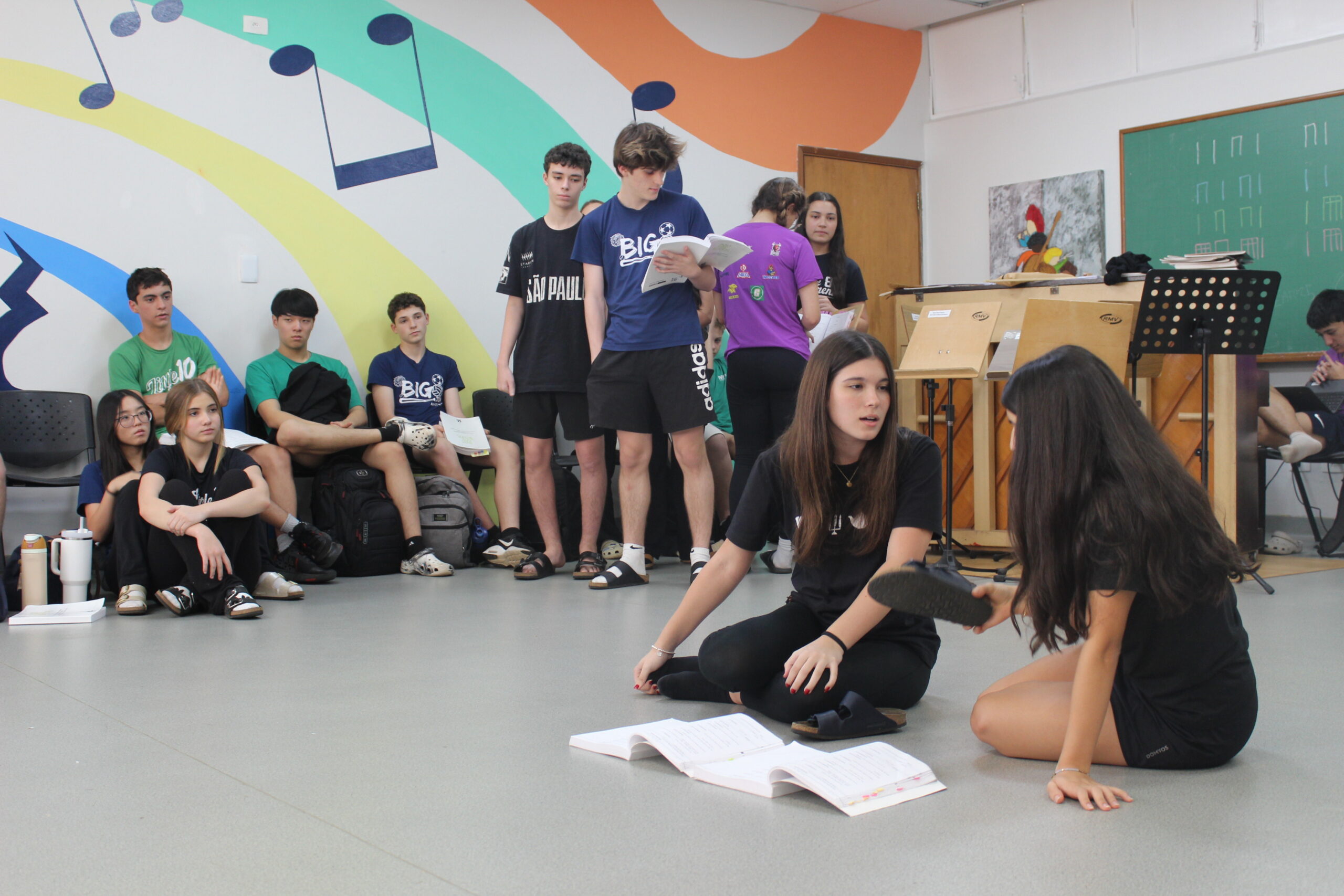Caption: The Chinese booth was decorated by PACA parents and was located next to the entrance of the Cafeteria. [provided by PACA parent]
by Isabella Kim
On Saturday, the 22nd of March of 2025, PACA hosted the International Festival. It is a festival held every year and is full of fun, games and lots of food from places all around the world.
Although the main attraction for this event was the14 food booths featuring food from 12 different countries, there was a lot more work going on behind the scenes to make everything happen and run smoothly.
This year, as well as the past ones, the high school students were in charge of preparing games and fun activities. The game booths were set up in the back court to provide a safe space for children to play away from the food booths. This was a new use of the PACA campus from last year.
The ninth grade students were in charge of a game known as the bean bag toss. The purpose of the game is to toss a bean bag and get it to fall into the designated hole.
The 10th grade booth had a small mini golf course set up. The 11th graders had the ladder toss games which encouraged strategic toss.
And the 12th graders had a soccer game in which students were challenged to kick the ball through a set of hula hoops to make it into the net.
Karina Lee, a freshman, says that this was a great first experience working as a staff in the game booths.
“So many children wanted the prizes we had, that by the end of the day, there was so much money inside our box,” Lee says. “I was happy to see that they could have a fun experience and at the same time help a cause.”
Not only students but PACA parents and staff came together to make the event possible. Some booths were completely organized by the PACA parents. Other booths received PACA parent volunteers to work alongside PACA staff.
Linda Lee Kim, a PACA mom in charge of the South Korean booth, explains the process for preparing the booth for the International Festival.
Kim says, “I organize a pre-meeting with PACA parents who cook and have lots of experience in making Korean dishes to make a list of dish suggestions to make for the festival. After making the list, we send the list to the group of parents helping with the Korean booth and we vote on who will bring which ingredients.”
Work is not only put into making the food and drinks but also decorations that make the South Korean booth a South Korean booth.
“There’s people who buy the ingredients, people who pre-make the dishes, bring drinks, decorations, people who serve the food, and people who bring the pots, plates, thermal insulator cups and such,” she says.
The same amount of hard work goes into the US booth. Vanessa Flurry, a PACA librarian in charge of the United States booth, says that other than the bakers, planners, communicators, decorators, and people in charge of sales, there are also people who are in charge of bringing the imported goods featured in the silent auction, a key sub-event of the International Festival.
When asked which was the hardest dish to make, Flurry says, “The apple pie is the hardest to make because the process takes a lot of time and many hands for the amount needed. We made 30 apple pies. Crust needs to be made, apples peeled, sliced, and seasoned, the pie is then assembled and covered. It will need to be frozen overnight and then baked for 2 hours.”
However, both Flurry and Kim say that in the end, all the hard work is worth it when you see the contentment of the people eating their booth’s food.
